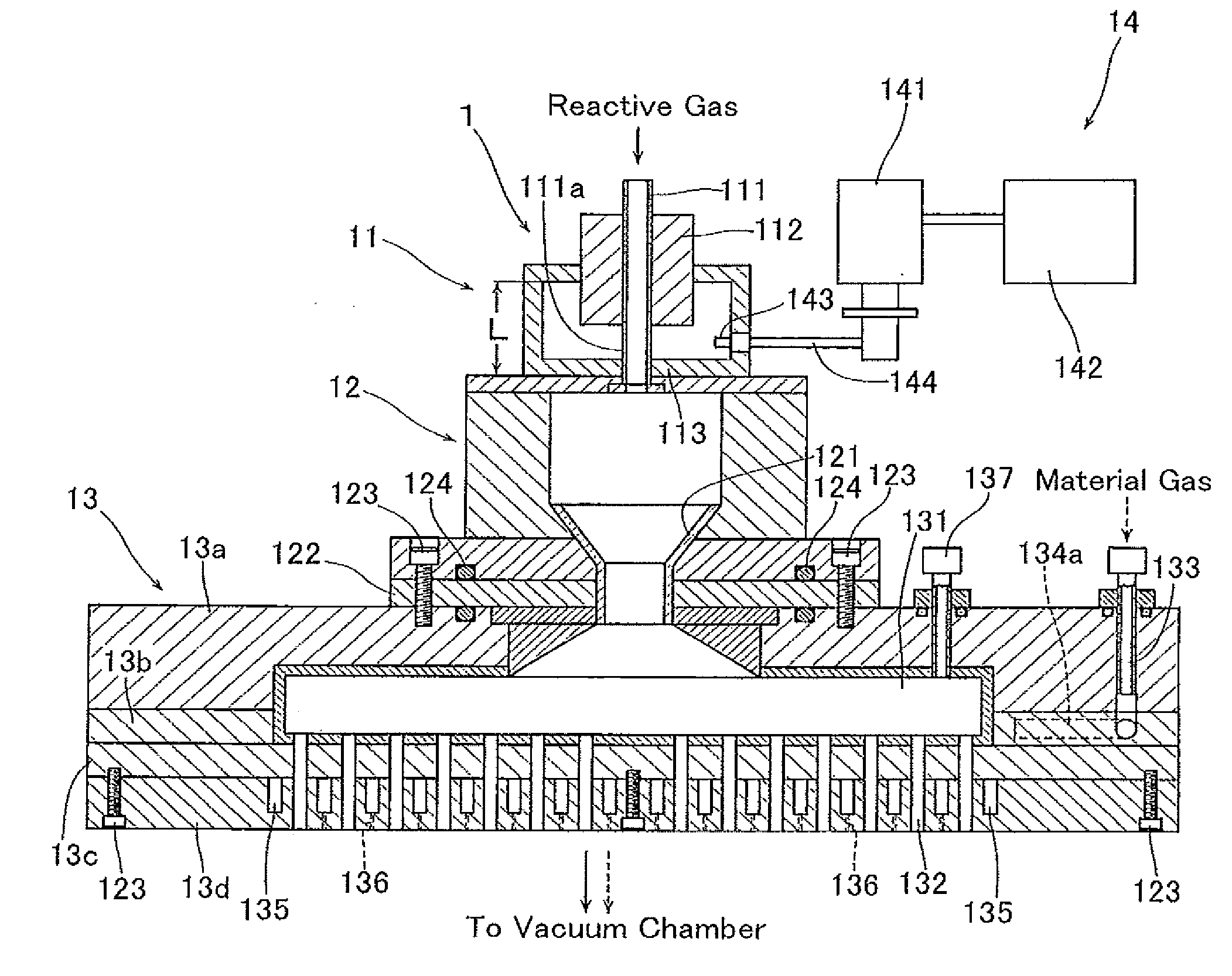Method of forming barrier film
- Summary
- Abstract
- Description
- Claims
- Application Information
AI Technical Summary
Benefits of technology
Problems solved by technology
Method used
Image
Examples
example 1
Practical Example 1
[0084]In this example, a film was formed in the first coating apparatus using the process sequence shown in FIG. 6. The parameters in the adsorption step were set as follows: time=5 sec; flow rate of reactive gas (H2 gas)=100 sccm; flow rate of bubbling gas (Ar) for material gas [Zr(BH4)4 gas]=100 sccm; and evacuation rate=1000 L / sec. The parameters in the modification step were set as follows: time=25 sec; reactive gas flow rate=100 sccm; microwave input power=0.5 kW; and evacuation rate=1000 L / sec. These adsorption and modification steps were each repeated 24 times to form a film on a substrate S. The resultant film was a ZrB2 film having a thickness of 10 μm.
example 2
Practical Example 2
[0085]In this example, a film was formed in the first coating apparatus using the process sequence shown in FIG. 9. The parameters in the adsorption step were set as follows: time=5 sec; flow rate of reactive gas (H2 gas)=100 sccm; flow rate of bubbling gas (Ar) for material gas [Zr(BH4)4 gas]=100 sccm; microwave input power=0.5 kW; and evacuation rate=1000 L / sec. The parameters in the modification step were set as follows: time=25 sec; reactive gas flow rate=100 sccm; microwave input power=0.5 kW; and evacuation rate=1000 L / sec. These adsorption and modification steps were each repeated 24 times to form a film on a substrate S. The resultant film was a ZrB2 film having a thickness of 10 μm.
example 3
Practical Example 3
[0086]In this example, a film was formed in the second coating apparatus using the process sequence shown in FIG. 6. The parameters in the adsorption step were set as follows: time=5 sec; flow rate of reactive gas (H2 gas)=100 sccm; flow rate of bubbling gas (Ar) for material gas [Zr(BH4)4 gas]=100 sccm; and evacuation rate=1000 L / sec. The parameters in the modification step were set as follows: time=25 sec; reactive gas flow rate=100 sccm; microwave input power=0.5 kW; and evacuation rate=1000 L / sec. These adsorption and modification steps were each repeated 24 times to form a film on a substrate S. Further, the inside of the coaxial resonant cavity 11 and the double pipe 22 were cooled during this deposition process. The resultant film was a ZrB2 film having a thickness of 10 μm, and etching of the inner surface of the gas passage 227, such as that shown in FIG. 12, was prevented.
PUM
| Property | Measurement | Unit |
|---|---|---|
| Temperature | aaaaa | aaaaa |
| Flow rate | aaaaa | aaaaa |
| Height | aaaaa | aaaaa |
Abstract
Description
Claims
Application Information
 Login to View More
Login to View More - R&D
- Intellectual Property
- Life Sciences
- Materials
- Tech Scout
- Unparalleled Data Quality
- Higher Quality Content
- 60% Fewer Hallucinations
Browse by: Latest US Patents, China's latest patents, Technical Efficacy Thesaurus, Application Domain, Technology Topic, Popular Technical Reports.
© 2025 PatSnap. All rights reserved.Legal|Privacy policy|Modern Slavery Act Transparency Statement|Sitemap|About US| Contact US: help@patsnap.com



